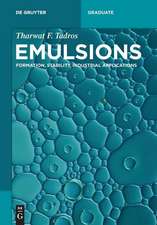Residual Stress: Measurement by Diffraction and Interpretation: Materials Research and Engineering
Autor Ismail C. Noyan, Jerome B. Cohenen Limba Engleză Paperback – iul 2012
Preț: 782.87 lei
Preț vechi: 954.72 lei
-18% Nou
Puncte Express: 1174
Preț estimativ în valută:
149.81€ • 160.19$ • 124.90£
149.81€ • 160.19$ • 124.90£
Carte tipărită la comandă
Livrare economică 18 aprilie-02 mai
Preluare comenzi: 021 569.72.76
Specificații
ISBN-13: 9781461395713
ISBN-10: 1461395712
Pagini: 292
Ilustrații: X, 276 p.
Dimensiuni: 170 x 244 x 15 mm
Greutate: 0.47 kg
Ediția:1987
Editura: Springer
Colecția Springer
Seria Materials Research and Engineering
Locul publicării:New York, NY, United States
ISBN-10: 1461395712
Pagini: 292
Ilustrații: X, 276 p.
Dimensiuni: 170 x 244 x 15 mm
Greutate: 0.47 kg
Ediția:1987
Editura: Springer
Colecția Springer
Seria Materials Research and Engineering
Locul publicării:New York, NY, United States
Public țintă
ResearchCuprins
1 Introduction.- 1.1 The Origin of Stresses.- 1.2 Methods of Measuring Residual Stresses.- 1.3 Some Examples of Residual Stresses.- References.- 2 Fundamental Concepts in Stress Analysis.- 2.1 Introduction.- 2.2 Definitions.- 2.3 Stress and Strain.- 2.4 Forces and Stresses.- 2.5 Displacements and Strains.- 2.6 Transformation of Axes and Tensor Notation.- 2.7 Elastic Stress-Strain Relations for Isotropic Materials.- 2.8 Structure of Single Crystals.- 2.9 Elastic Stress-Strain Relations in Single Crystals.- 2.10 Equations of Equilibrium.- 2.11 Conditions of Compatibility.- 2.12 Basic Definitions in Plastic Deformation.- 2.13 Plastic Deformation of Single Crystals.- 2.14 Deformation and Yielding in Inhomogeneous Materials.- Problems.- 3 Analysis of Residual Stress Fields Using Linear Elasticity Theory.- 3.1 Introduction.- 3.2 Macroresidual Stresses.- 3.3 Equations of Equilibrium for Macrostresses.- 3.4 Microstresses.- 3.5 Equations of Equilibrium for Micro- and Pseudo-Macrostresses.- 3.6 Calculation of Micro- and PM Stresses.- 3.7 The Total Stress State in Surface Deformed Multiphase Materials.- 3.8 Macroscopic Averages of Single Crystal Elastic Constants.- 3.9 The Voigt Average.- 3.10 The Reuss Average.- 3.11 Other Approaches to Elastic Constant Determination.- 3.12 Average Diffraction Elastic Constants.- Summary.- References.- 4 Fundamental Concepts in X-ray Diffraction.- 4.1 Introduction.- 4.2 Fundamentals of X-rays.- 4.3 Short-wavelength Limit and the Continuous Spectrum.- 4.4 Characteristic Radiation Lines.- 4.5 X-ray Sources.- 4.6 Absorption of X-rays.- 4.7 Filtering of X-rays.- 4.8 Scattering of X-rays.- 4.9 Scattering from Planes of Atoms.- 4.10 The Structure Factor of a Unit Cell.- 4.11 Experimental Utilization of Bragg’s Law.- 4.12 Monochromators.- 4.13Collimators and Slits.- 4.14 Diffraction Patterns from Single Crystals.- 4.15 Diffraction Patterns from Polycrystalline Specimens.- 4.16 Basic Diffractometer Geometry.- 4.17 Intensity of Diffracted Lines for Polycrystals.- 4.18 Multiplicity.- 4.19 Lorentz Factor.- 4.20 Absorption Factor.- 4.21 Temperature Factor.- 4.22 X-ray Detectors.- 4.23 Deadtime Correction for Detection Systems.- 4.24 Total Diffracted Intensity at a Given Angle 20.- 4.25 Depth of Penetration of X-rays.- 4.26 Fundamental Concepts in Neutron Diffraction.- 4.27 Scattering and Absorption of Neutrons.- Problems.- Bibliography and References.- 5 Determination of Strain and Stress Fields by Diffraction Methods.- 5.1 Introduction.- 5.2 Fundamental Equations of X-ray Strain Determination.- 5.3 Analysis of Regular “d” vs. sin2? Data.- 5.4 Determination of Stresses from Diffraction Data.- 5.5 Biaxial Stress Analysis.- 5.6 Triaxial Stress Analysis.- 5.7 Determination of the Unstressed Lattice Spacing.- 5.8 Effect of Homogeneity of the Strain Distribution and Specimen Anisotropy.- 5.9 Average Strain Data from Single Crystal Specimens.- 5.10 Interpretation of the Average X-ray Strain Data Measured from Polycrystalline Specimens.- 5.11 Interpretation of Average Stress States in Polycrystalline Specimens.- 5.12 Effect of Stress Gradients Normal to the Surface on d vs. sin2? Data.- 5.13 Experimental Determination of X-ray Elastic Constants.- 5.14 Determination of Stresses from Oscillatory Data.- 5.15 Stress Measurements with Neutron Diffraction.- 5.16 Effect of Composition Gradients with Depth.- 5.17 X-ray Determination of Yielding.- 5.18 Summary.- Problem.- References.- 6 Experimental Errors Associated with the X-ray Measurement of Residual Stress.- 6.1 Introduction.- 6.2 Selection of the Diffraction Peakfor Stress Measurements.- 6.3 Peak Location.- 6.4 Determination of Peak Position for Asymmetric Peaks.- 6.5 Statistical Errors Associated with the X-ray Measurement of Line Profiles.- 6.6 Statistical Errors in Stress.- 6.7 Instrumental Errors in Residual Stress Analysis.- 6.8 Corrections for Macrostress Gradients.- 6.9 Corrections for Layer Removal.- 6.10 Summary.- Problems.- References.- 7 The Practical Use of X-ray Techniques.- 7.1 Introduction.- 7.2 The Use of Ordinary Diffractometers.- 7.3 Software and Hardware Requirements.- 7.4 Available Instruments.- 7.5 Selected Applications of a Portable X-ray Residual Stress Unit (By W. P. Evans).- Reference.- 8 The Shape of Diffraction Peaks — X-ray Line Broadening.- 8.1 Introduction.- 8.2 Slit Corrections.- 8.3 Fourier Analysis of Peak Broadening.- Problem.- References.- Appendix A: Solutions to Problems.- Appendix B.- B.1 Introduction.- B.2 The Marion-Cohen Method.- B.3 Dölle-Hauk Method (Oscillation-free Reflections).- B.4 Methods of Peiter and Lode.- B.5 Use of High Multiplicity Peaks.- References.- Appendix C: Fourier Analysis.- Appendix D: Location of Useful Information in “International Tables for Crystallography”.- Appendix F: A Compilation of X-ray Elastic Constants (By Dr. M. James).- References.



















